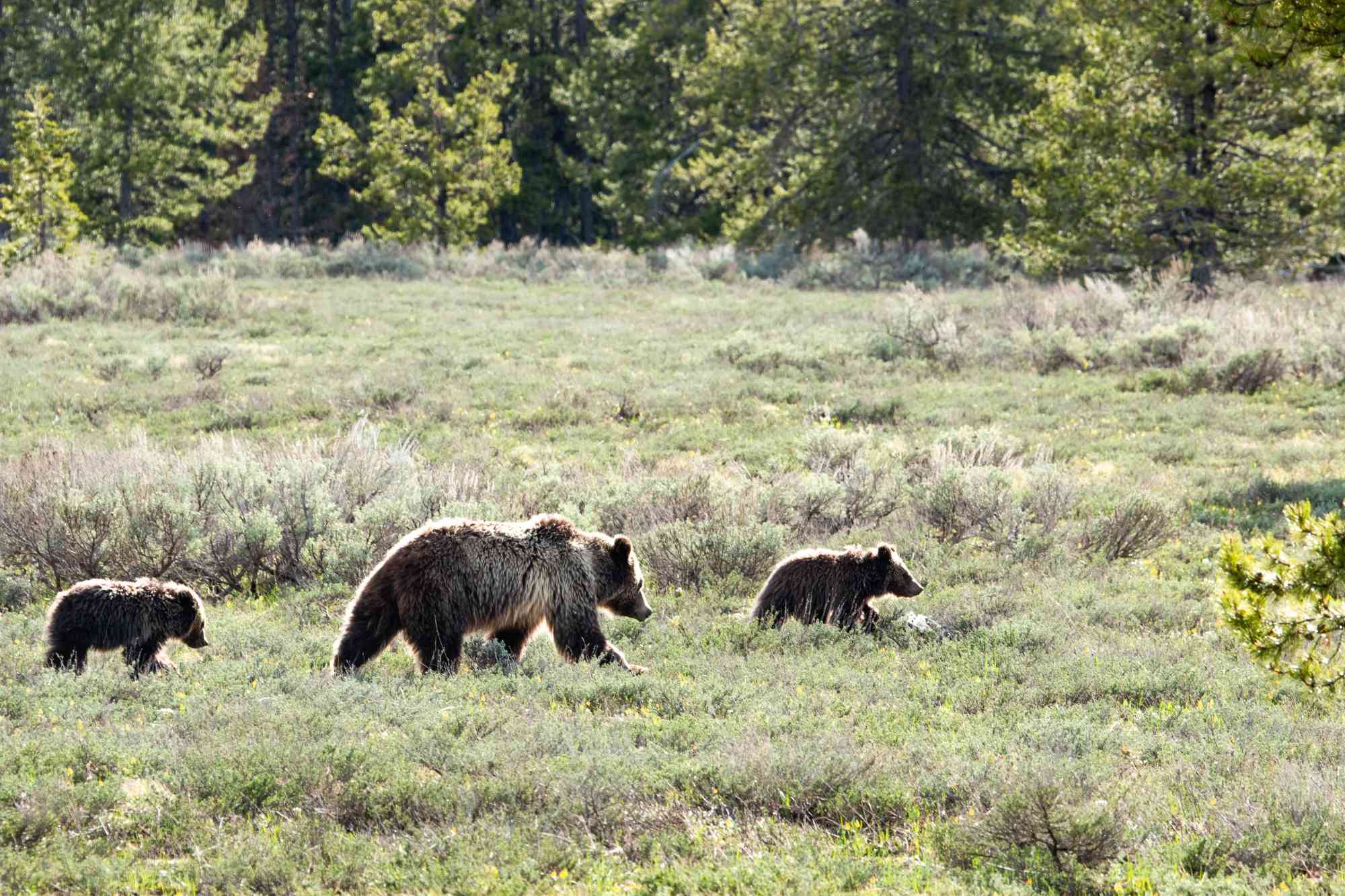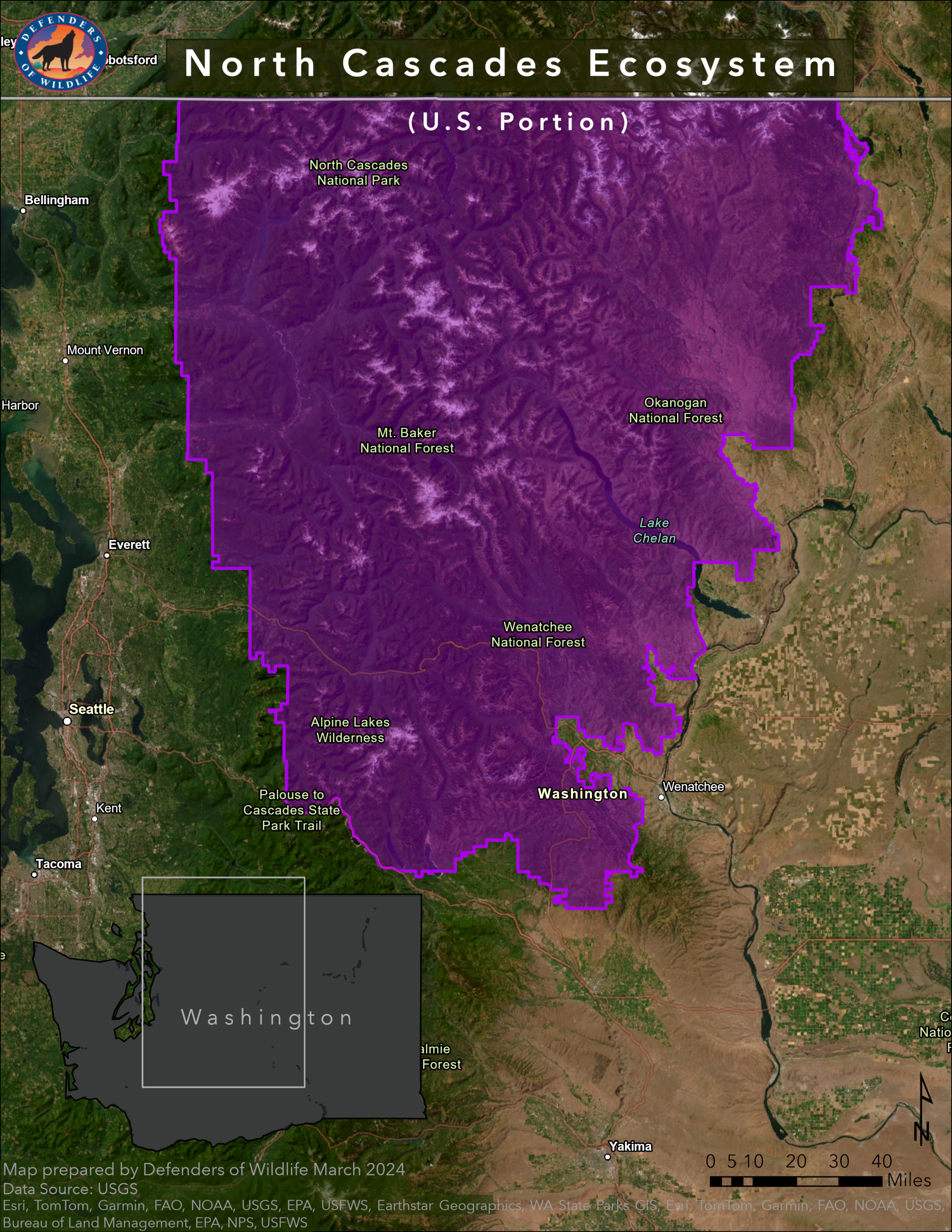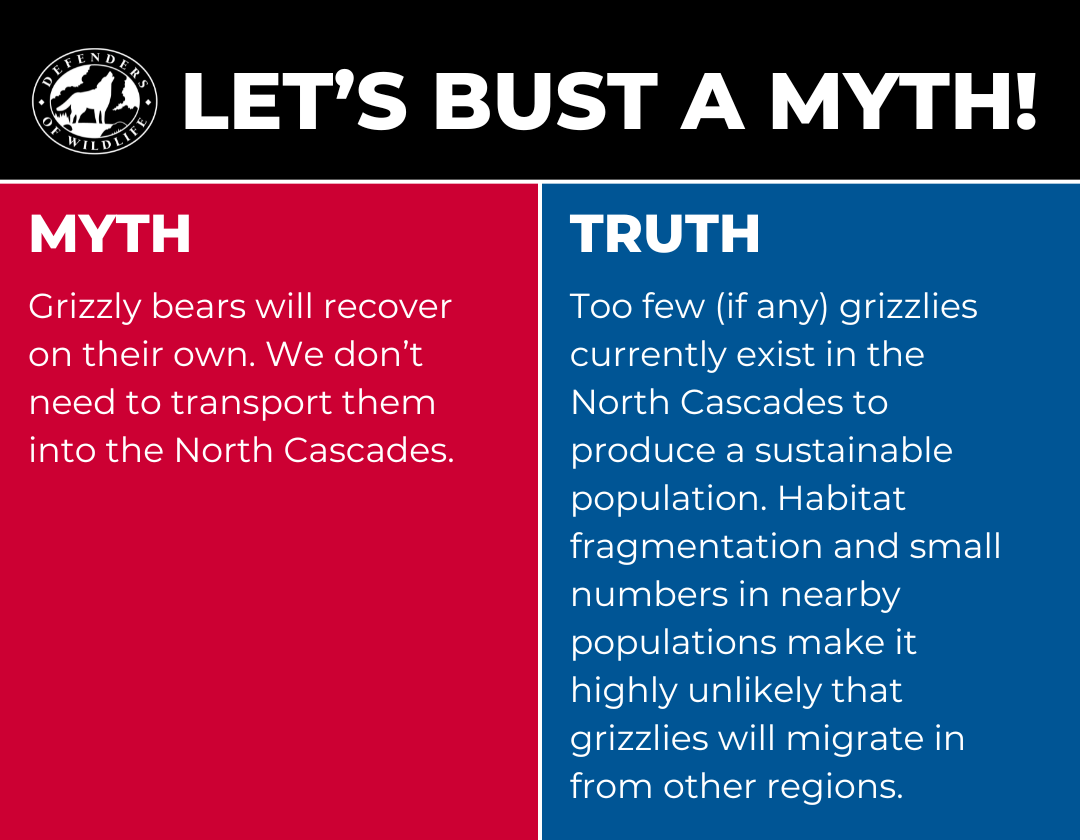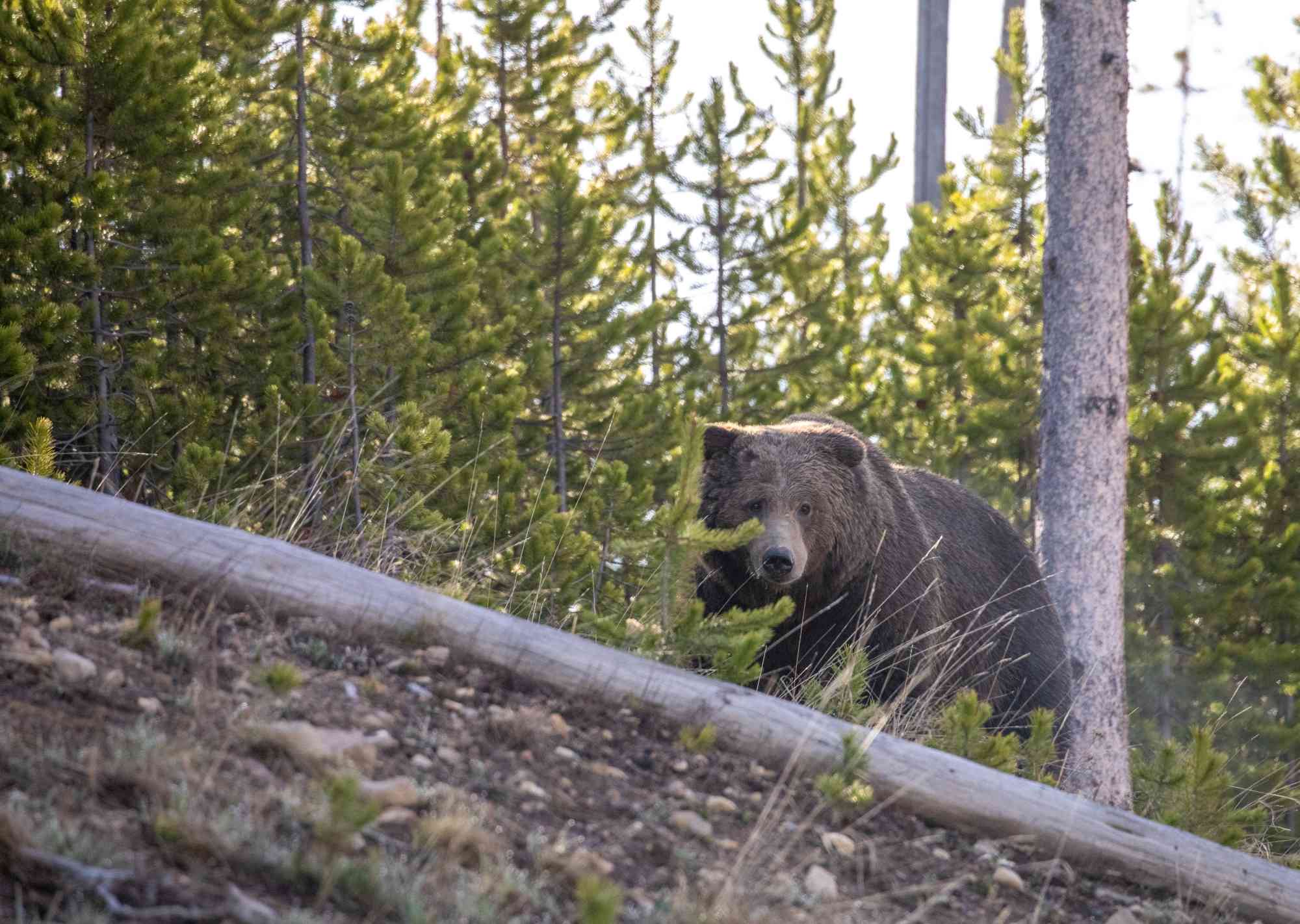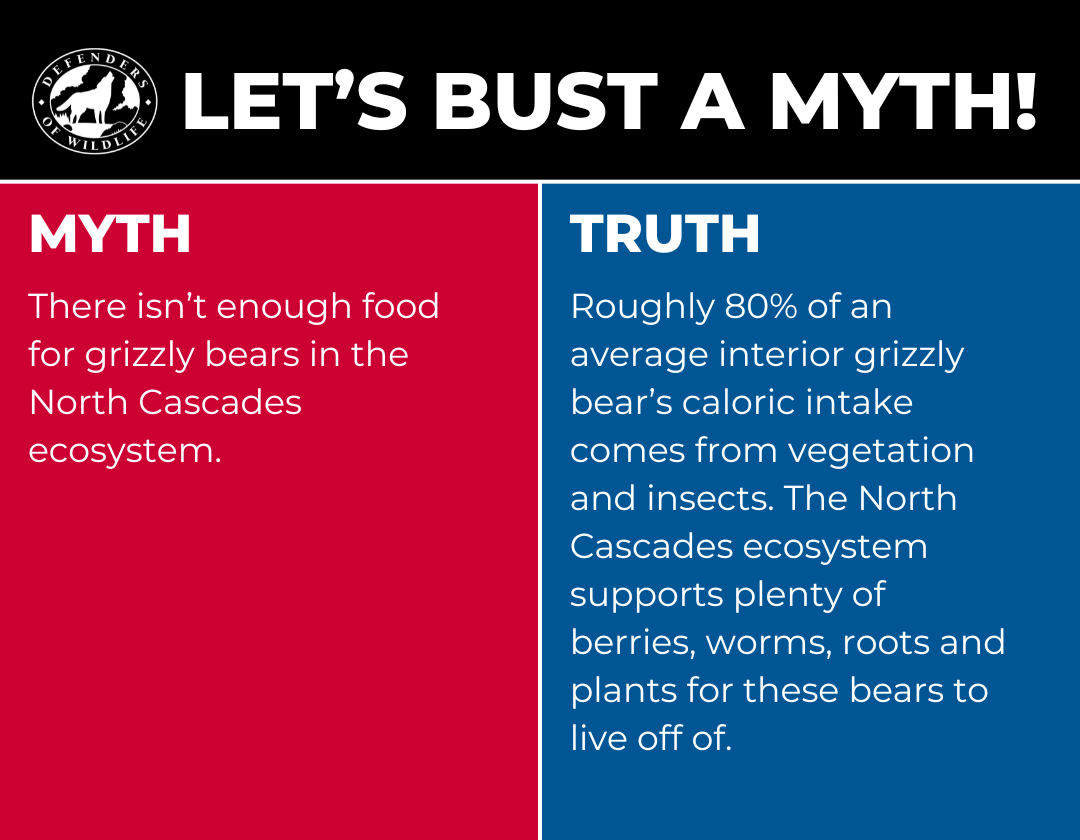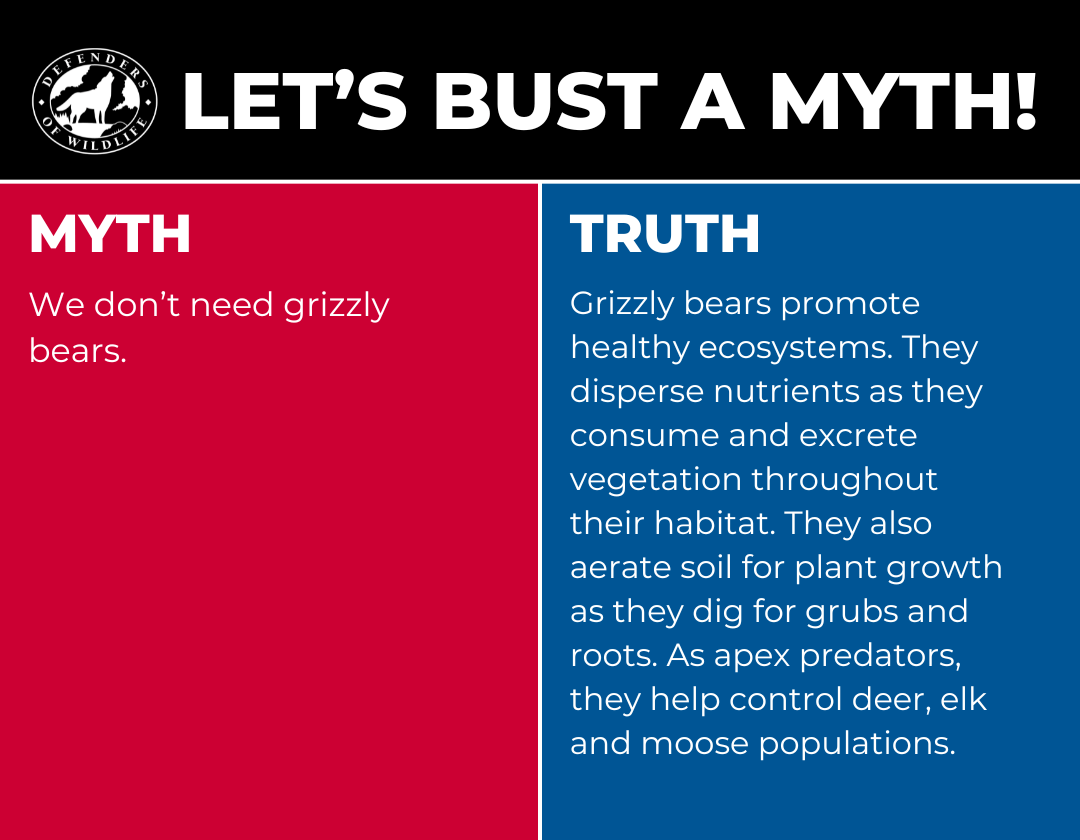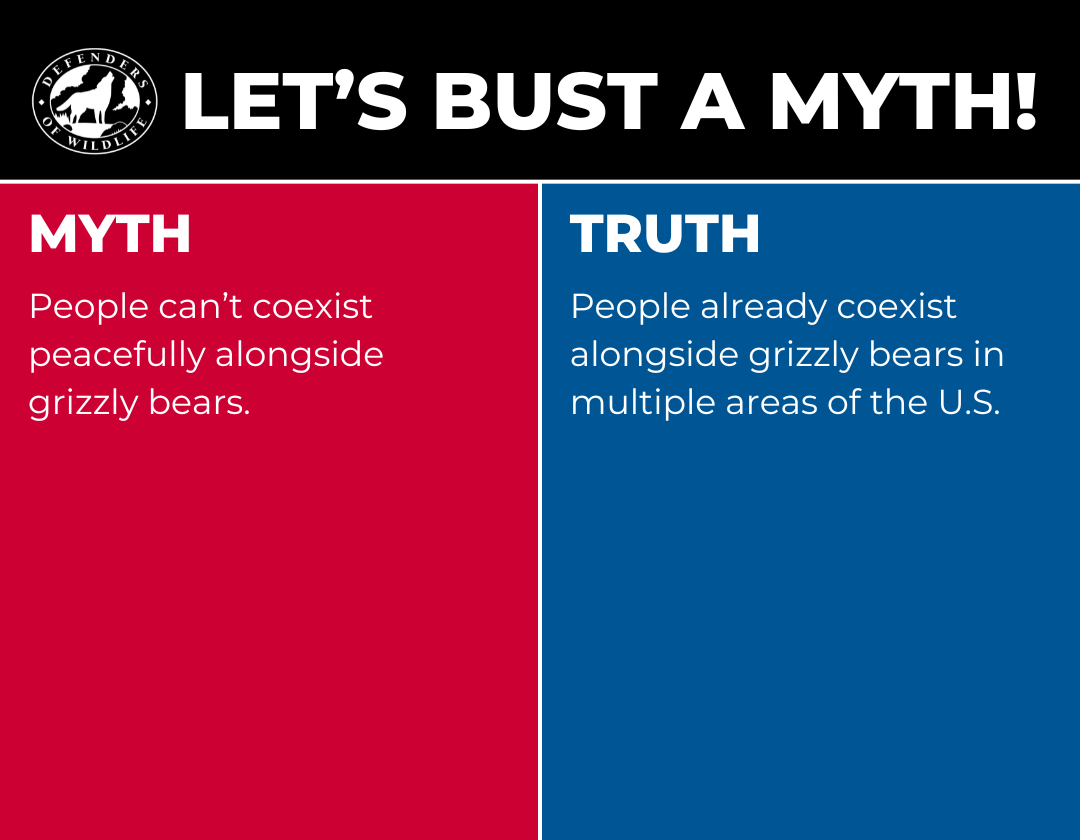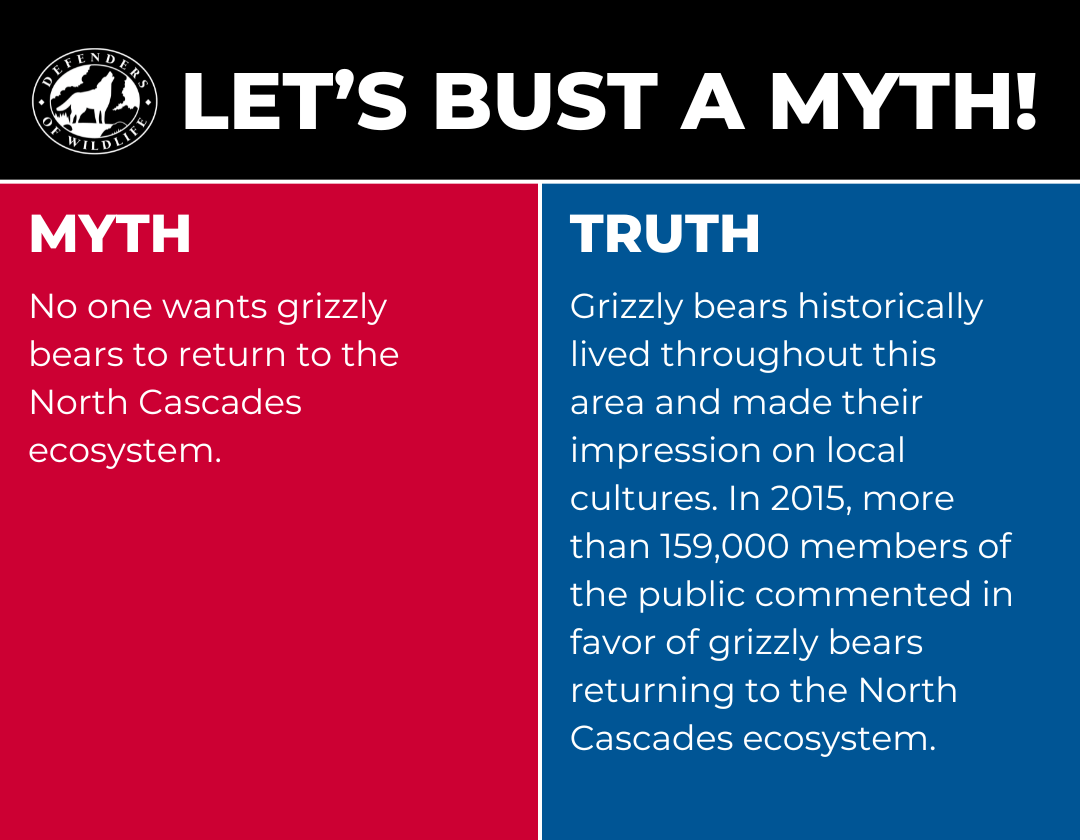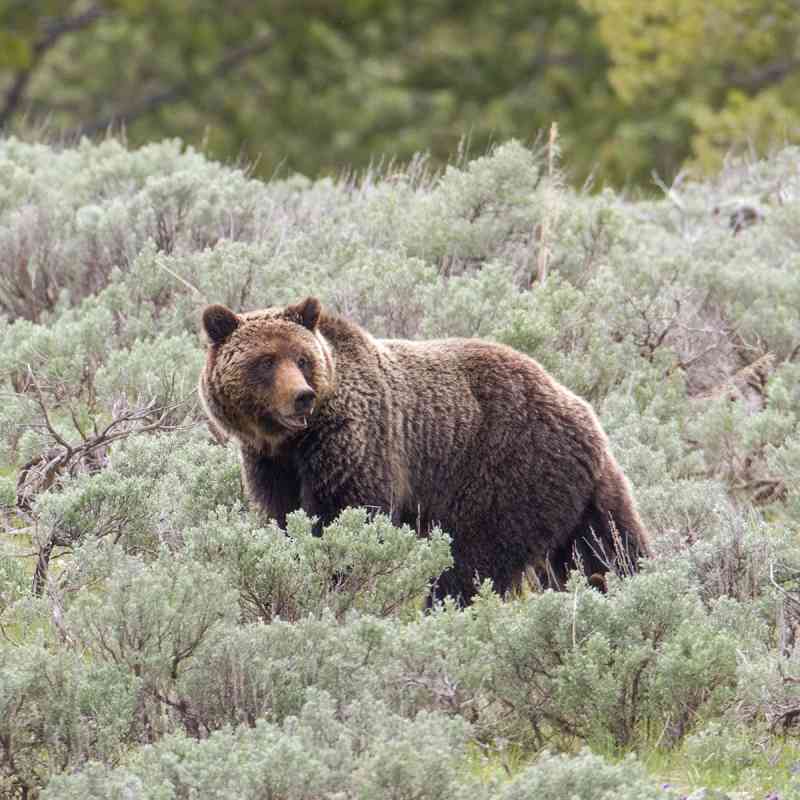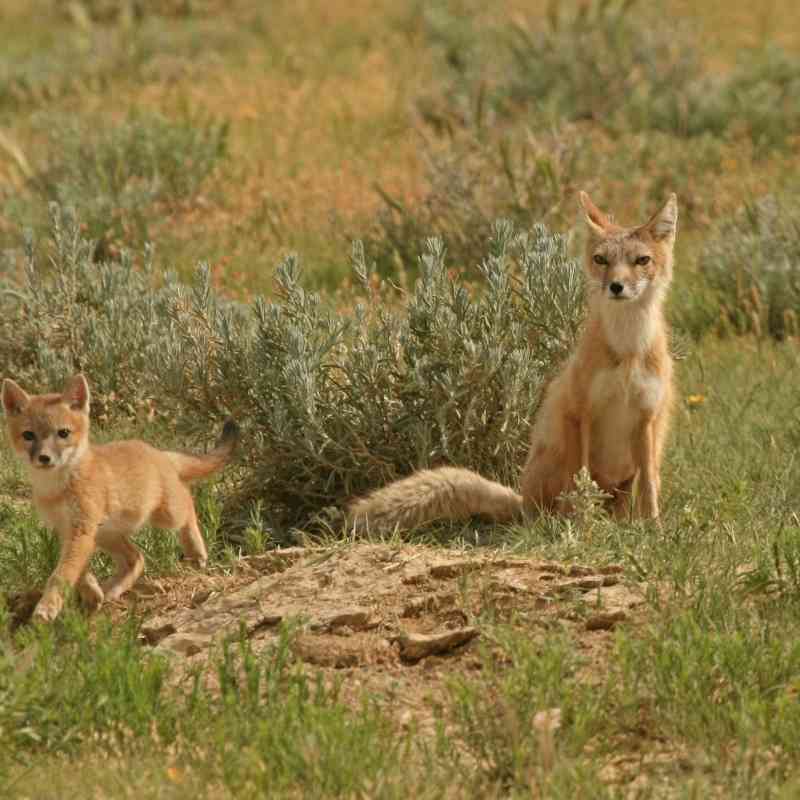The North Cascades ecosystem in Washington state spans over 9,500 square miles and includes a portion of the towering Cascades Mountain range. The region receives high amounts of rain annually which allows for dense vegetation and is one of the most intact wild landscapes in the lower 48, making it an ideal home for wildlife.
Grizzly bears are one of a handful of species who once called the North Cascades home but are absent from the landscape today. Thankfully, work is underway to potentially restore the population through reintroduction efforts. This work is complex and, unfortunately, ripe for fearmongering and misinformation campaigns.
So, instead of spreading tall tails, let’s sow some seeds of truth and learn what’s really behind the effort to reintroduce grizzly bears to the North Cascades ecosystem.
1. Fact: It’s highly unlikely North Cascade grizzly bears will recover on their own.
There have been no verified sightings of grizzly bears in the North Cascades ecosystem since 1996, and federal agencies do not expect them to repopulate on their own. All nearby grizzly bear populations are too small to support a viable population expansion into the North Cascades. Additionally, they would need to cross over major natural and man-made barriers to get there. For example, grizzly bears currently inhabit the Selkirk ecosystem in northeastern Washington, but this population is extremely small (approximately 10 bears) and cut off from the North Cascades by Highway 97 and other roadways.
For this reason, federal agencies currently propose to capture three to seven bears per year from healthy populations in similar habitats and release them into the North Cascades ecosystem. This effort will take place for the first five to 10 years of the plan until an initial population of 25 bears is reached. The goal is for the population to then naturally reproduce up to 200 bears over the next 60 to 100 years. Wildlife biologists successfully relocated bears in this manner when restoring grizzlies to western Montana.
2. Fact: There is plenty of food and habitat for grizzly bears to thrive in the North Cascade ecosystem.
The North Cascades ecosystem encompasses a national park, national forests and wilderness areas. There is no motorized access to 70% of the landscape, giving grizzlies safe passage throughout much of the habitat.
Grizzly bears’ diets do vary a little by region. They are opportunistic feeders and will take advantage of the food sources available in their range. Interior grizzly bears — like those currently living in Yellowstone — rely mostly on vegetation and insects for their diet. It’s likely the grizzly bears in the North Cascades ecosystem would follow a similar diet, as this area supports 100 of the 124 plant species that grizzly bears eat.
3. Fact: Grizzly bears play an important ecological role.
Grizzly bears are nature’s gardeners! They are seed dispersers and transport nutrients through their feces as they eat the various vegetation throughout their range. Additionally, their long claws help them dig for roots, bugs and small mammals. Churning the soil improves it and promotes plant growth.
Grizzly bears are an “umbrella” species meaning the habitat that supports them also supports hundreds of other plants and animals, in addition to clean water and healthy forests. When we look after grizzlies, we look after whole ecosystems.
4. Fact: People and grizzly bears can and do coexist peacefully
The best assurance to peaceful coexistence between humans and any large mammal is to be educated and take sensible precautions. When this is the case, humans and grizzly bears can and do coexist quite well. In Yellowstone National Park, where over 1,000 grizzly bears reside, a long-term study showed that the risk of a grizzly bear injuring a human was 1 in every 2.7 million visits. With the agency-determined initial population of 25 bears ranging over a 9,500 square mile area in the North Cascades ecosystem, humans would be less likely to encounter grizzlies in the North Cascades than in other recovery zones.
Defenders of Wildlife works extensively to promote human-bear coexistence in Washington state. During bear awareness workshops in the North Cascades and Selkirk ecosystems, communities learn techniques to significantly decrease the risk of negative human-bear encounters, including securing food while camping and how to properly use bear spray. Defenders also supports electric fence set-up, which can help secure common bear attractants including livestock, fruit trees and garbage.
5. Fact: Many people want grizzly bears in the North Cascades ecosystem.
A similar process to reintroduce grizzly bears to this part of their historical range began in 2015 and was met with substantial public approval, but the Trump Administration halted it in 2020. Fortunately, the National Park Service started a new process in 2023 that is expected to conclude this summer.
As we await an update this spring, help us continue to sow seeds of truth and bust the myths circulating around this reintroduction. Plus, follow along with Defenders as this process continues!
Author

Kathleen Callaghy

Allison Cook
Areas of Expertise: Communications, writing for the blog and website
Allison joined Defenders of Wildlife in 2023 after working for Smithsonian's National Zoo and Conservation
comments
Wildlife & Wild Places

